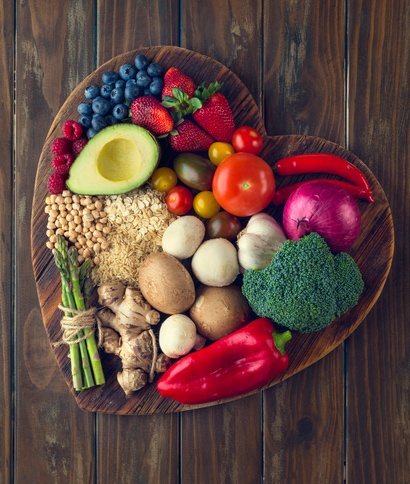 As the seasons shift and fall settles in, it’s the perfect time to take advantage of the bountiful seasonal produce that boosts your nutrition and supports an active lifestyle. The cooler weather and fresh produce available at this time of year provide not only a delicious variety but also essential nutrients that help you stay energized, strong, and healthy. Whether you’re training for a race, hitting the gym, or simply maintaining your fitness routine, embracing fall produce can give your body the fuel it needs.
As the seasons shift and fall settles in, it’s the perfect time to take advantage of the bountiful seasonal produce that boosts your nutrition and supports an active lifestyle. The cooler weather and fresh produce available at this time of year provide not only a delicious variety but also essential nutrients that help you stay energized, strong, and healthy. Whether you’re training for a race, hitting the gym, or simply maintaining your fitness routine, embracing fall produce can give your body the fuel it needs.
Power Your Workouts with Root Vegetables
Fall brings with it an abundance of root vegetables like sweet potatoes, carrots, and beets, which are excellent sources of complex carbohydrates. These carbs provide slow-releasing energy, perfect for fueling your workouts and helping you power through longer sessions without the dreaded energy crash. Sweet potatoes, for instance, are packed with vitamin A, fiber, and potassium—ideal for supporting muscle function and recovery.
Roasted root vegetables can be a simple yet satisfying addition to any meal, offering both nutrition and comfort as the weather cools. Try incorporating them into your pre-workout meals to ensure you have the energy reserves needed for optimal performance.
Fiber-Rich Apples and Pears to Keep You on Track
Apples and pears are at their peak in the fall and are not only tasty but also rich in fiber. Fiber is crucial for keeping your digestive system running smoothly, especially as you increase your nutrient intake to fuel an active lifestyle. The natural sugars in apples and pears can provide a quick energy boost, making them great snack options before or after a workout.
For an easy, on-the-go snack, pair sliced apples or pears with a source of protein like nut butter. This combination will help you stay full longer while giving you the fuel you need to support muscle repair.
Pumpkin for Immune-Boosting Benefits
Pumpkin is a quintessential fall vegetable that offers more than flavor for your lattes. It’s packed with beta-carotene, which your body converts to vitamin A, supporting immune health, vision, and skin integrity. As cold and flu season approaches, adding pumpkin to your diet can give your immune system the extra support it needs. Additionally, pumpkin is rich in vitamin C, another key nutrient that boosts immunity and helps reduce inflammation after intense physical activity.
Add pumpkin puree to soups, stews, or even smoothies to easily increase your intake of this seasonal powerhouse.
By embracing fall’s rich selection of fruits and vegetables, you can not only enjoy the flavors of the season but also fuel your body with the nutrients it needs to maintain an active lifestyle. Whether it’s the sustained energy from root vegetables, the digestive support from apples and pears, or the immune boost from pumpkin, fall produce offers an array of benefits to keep you healthy, strong, and ready for anything.
Looking to optimize your nutrition this season? Connect with a nutritionist at the National Institute for Fitness and Sport (NIFS) to develop a personalized fall meal plan that fuels your fitness goals. Our experts can help you maximize the benefits of seasonal produce while ensuring you get the right nutrients for your active lifestyle. Schedule your consultation today and start fueling your body for success!


 Sometimes you might think you’re doing the right things (or at least not really wrong things) when it comes to healthy eating. But those habitual behaviors might actually cause you to consume more food and calories.
Sometimes you might think you’re doing the right things (or at least not really wrong things) when it comes to healthy eating. But those habitual behaviors might actually cause you to consume more food and calories.
 February is
February is 